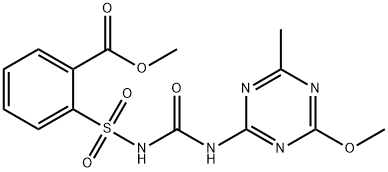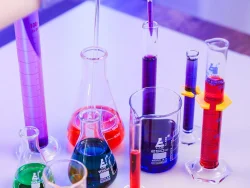2-Acetyl pyrrole
Synonym(s):2-Acetylpyrrole;Methyl 2-pyrrolyl ketone
- CAS NO.:1072-83-9
- Empirical Formula: C6H7NO
- Molecular Weight: 109.13
- MDL number: MFCD00005220
- EINECS: 214-016-2
- SAFETY DATA SHEET (SDS)
- Update Date: 2025-06-26 21:45:57

What is 2-Acetyl pyrrole?
Description
Methyl 2-pyrrolyl ketone is like bread, walnut, licorice. May be prepared from pyrryl magnesium iodide and acetyl chloride; a volatile flavor component in roasted filberts.
Description
Happy Thanksgiving! If you are like many of us, sweet potatoes (aka yams) are one of the highlights of your Turkey Day meal. The aroma of a casserole baking in the oven adds to that comfort-food feeling.
A chemist would naturally ask, “Why do roasting or baking sweet potatoes smell so good?” Ola Lasekan* and Li Shing Teoh at University Putra Malaysia (Serdang), identified 29 aroma compounds in roasting white yam (Dioscorea rotundata)1. Among them, the two that had the highest odor activity factors were 2-acetylfuran (2AF, aka 2-furyl methyl ketone) and 2-acetylpyrrole (2AP, aka 2-pyrrolyl methyl ketone).
According to the authors, 2AF “elicited an almond-like note” whereas 2AP had “a popcorn-like note”. The aromas emitted by the other components, mostly furans, pyrroles, and pyrazines, were given labels such as “toasty”, “caramel”, “chamomile flower–like”, and “smoky”.
The focus of this study was to identify the aroma compounds that contribute to the potatoes’ antioxidant properties. Using an established test based on substances’ ability to inhibit the oxidation of hexanal, the authors found that the pyrrole-containing aroma components were substantially superior antioxidants to the furans and especially the pyrazines.
A glance at the hazard information tables shown here might give you pause. 2AF in particular looks as if it might kill you as you’re enjoying the holiday. But rest assured that these, like many other odorous substances, are detectable in air at very low concentrations.
So, this Thanksgiving Day, while you’re watching the virtual Macy’s parade and NFL football games, take satisfaction that some of the food aromas you’re inhaling add to your antioxidant supply.
1. Full disclosure: Dioscorea spp. are “true yams”, as opposed to the orange-colored sweet potatoes (Convolvulaceae spp.) that some Americans call yams. The baking and roasting aromas of both yam genera contain 2AF and 2AP.
Chemical properties
white to beige crystalline powder
Chemical properties
Methyl-2-pyrrolyl ketone has an odor reminiscent of bread, walnut and licorice
Occurrence
Reported found in essential oils of tobacco leaves, apple, asparagus, onion, baked and fried potato, roasted almonds, wheat bread, cooked chicken, cooked beef and pork, beer, malt whiskey, cocoa, coffee, tea, roasted filberts, and peanuts, peanut butter, potato chips, soybean, coconut, mushrooms, almond, mango, licorice, sweet corn, malt, wort, dried bonito, Bourbon vanilla, chicory root, okra, crab, scallop and clam.
The Uses of 2-Acetyl pyrrole
hepatoprotectant, organoleptic
The Uses of 2-Acetyl pyrrole
2-Acetylpyrrole has been used in the synthesis of 2-acetyl-1-pyrroline.
Definition
ChEBI: A pyrrole carrying an acetyl substituent at the 2-position.
Preparation
From pyrrole magnesium iodide and acetyl chloride; a volatile flavor component in roasted filberts
Synthesis Reference(s)
The Journal of Organic Chemistry, 48, p. 3214, 1983 DOI: 10.1021/jo00167a014
Tetrahedron Letters, 26, p. 4649, 1985 DOI: 10.1016/S0040-4039(00)98776-8
General Description
2-Acetylpyrrole undergoes alkylation reaction with alkyl iodide in benzene/solid KOH system in the presence of 18-crown-6 to yield the corresponding 1-alkyl derivative.
Properties of 2-Acetyl pyrrole
| Melting point: | 88-93 °C (lit.) |
| Boiling point: | 220 °C (lit.) |
| Density | 1.1143 (rough estimate) |
| refractive index | 1.5040 (estimate) |
| FEMA | 3202 | METHYL 2-PYRROLYL KETONE |
| Flash point: | 220°C |
| storage temp. | Sealed in dry,Room Temperature |
| solubility | 274 g/l |
| appearance | white to beige crystals or powder |
| pka | 14.86±0.50(Predicted) |
| form | Crystalline Powder |
| color | White to beige |
| Odor | roasted odor |
| JECFA Number | 1307 |
| BRN | 1882 |
| CAS DataBase Reference | 1072-83-9(CAS DataBase Reference) |
| NIST Chemistry Reference | Ethanone, 1-(1H-pyrrol-2-yl)-(1072-83-9) |
| EPA Substance Registry System | 2-Acetylpyrrole (1072-83-9) |
Safety information for 2-Acetyl pyrrole
| Signal word | Warning |
| Pictogram(s) |
 Exclamation Mark Irritant GHS07 |
| GHS Hazard Statements |
H302:Acute toxicity,oral H315:Skin corrosion/irritation H319:Serious eye damage/eye irritation H335:Specific target organ toxicity, single exposure;Respiratory tract irritation |
| Precautionary Statement Codes |
P261:Avoid breathing dust/fume/gas/mist/vapours/spray. P264:Wash hands thoroughly after handling. P264:Wash skin thouroughly after handling. P280:Wear protective gloves/protective clothing/eye protection/face protection. P304+P340:IF INHALED: Remove victim to fresh air and Keep at rest in a position comfortable for breathing. P305+P351+P338:IF IN EYES: Rinse cautiously with water for several minutes. Remove contact lenses, if present and easy to do. Continuerinsing. P405:Store locked up. |
Computed Descriptors for 2-Acetyl pyrrole
2-Acetyl pyrrole manufacturer
Triveni Interchem Private Limited (Group Of Triveni Chemicals)
New Products
Indole Methyl Resin tert-butyl 9-methoxy-3-azaspiro[5.5]undecane-3-carboxylate Boc-His(Boc)-OH 2-CTC Resin 4-Chloro-7-tosy1-7Hpyrrolo[2,3-d]pyrimidine 5,7-Dibromo-1H-indole 2,5-dichloro-N-hydroxy-4,6-dimethylpyridine-3-carboximidamide 2,2-Dimethoxy-7-azaspiro[3.5]nonane hydrochloride 4-chloromethyl-5-methyl-1,3-dioxol-2-one (DMDO-Cl) R-2-BENZYLOXY PROPIONIC ACID 1,1’-CARBONYLDIIMIDAZOLE 1,1’-CARBONYLDI (1,2-4 TRIAZOLE) N-METHYL INDAZOLE-3-CARBOXYLIC ACID 4-((2-hydroxyethyl)thio)benzoic acid 1-(TERT-BUTOXYCARBONYL)-2-PYRROLIDINONE Methyl 6-methylnicotinate 3-Pyridineacrylic acid tert-Butyl carbazate TETRAHYDRO-2H-PYRAN-3-OL 2-((4-morpholinophenylamino) (methylthio) methylene) malononitrile 3-(4-morpholinophenylamino)-5-amino-1H-pyrazole-4-carbonitrile 2,4-dihydroxybenzaldehyde 1,3-Diethyl-1,3-Diphenylurea Methyl 2-methylquinoline-6-carboxylateRelated products of tetrahydrofuran








You may like
-
 1072-83-9 99%View Details
1072-83-9 99%View Details
1072-83-9 -
 2-Acetylpyrrole CAS 1072-83-9View Details
2-Acetylpyrrole CAS 1072-83-9View Details
1072-83-9 -
 2-Acetylpyrrole CAS 1072-83-9View Details
2-Acetylpyrrole CAS 1072-83-9View Details
1072-83-9 -
 2-Acetylpyrrole (1072-83-9) (C6H7NO), solidView Details
2-Acetylpyrrole (1072-83-9) (C6H7NO), solidView Details
1072-83-9 -
 Crystals 2-Acetyl Pyrrole CAS: 1072-83-9, Packaging Type: Bag, 25kgView Details
Crystals 2-Acetyl Pyrrole CAS: 1072-83-9, Packaging Type: Bag, 25kgView Details
1072-83-9 -
 Solid 98% Pure 2-Acetyl PyrroleView Details
Solid 98% Pure 2-Acetyl PyrroleView Details
1072-83-9 -
 Pyridine 99.5% HPLC /UV SpectroscopyView Details
Pyridine 99.5% HPLC /UV SpectroscopyView Details
110-86-1 -
 Thiourea 99% ARView Details
Thiourea 99% ARView Details
62-56-6
